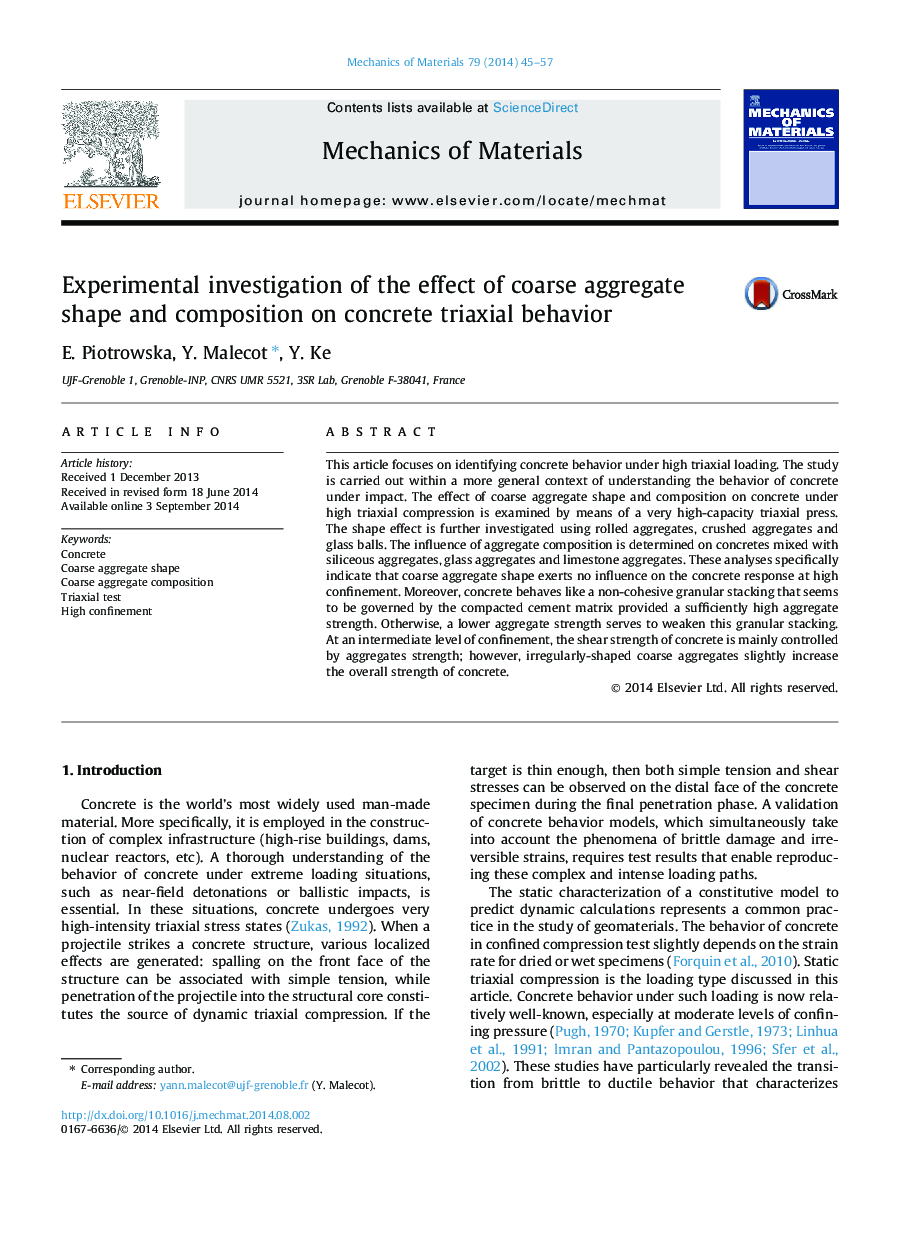| کد مقاله | کد نشریه | سال انتشار | مقاله انگلیسی | نسخه تمام متن |
|---|---|---|---|---|
| 799730 | 1467462 | 2014 | 13 صفحه PDF | دانلود رایگان |
• Triaxial tests up to 650 MPa are done on concretes made with 4 types of aggregates.
• The aggregate shape does not exerts any influence under high confinement (≥200 MPa).
• The shear strength of concrete is controlled by the compacted matrix (≥200 MPa).
• A lower-strength aggregate reduces concrete strength at very high confinement.
• Aggregate/mortar interface strength is the main factor of unconfined compression.
This article focuses on identifying concrete behavior under high triaxial loading. The study is carried out within a more general context of understanding the behavior of concrete under impact. The effect of coarse aggregate shape and composition on concrete under high triaxial compression is examined by means of a very high-capacity triaxial press. The shape effect is further investigated using rolled aggregates, crushed aggregates and glass balls. The influence of aggregate composition is determined on concretes mixed with siliceous aggregates, glass aggregates and limestone aggregates. These analyses specifically indicate that coarse aggregate shape exerts no influence on the concrete response at high confinement. Moreover, concrete behaves like a non-cohesive granular stacking that seems to be governed by the compacted cement matrix provided a sufficiently high aggregate strength. Otherwise, a lower aggregate strength serves to weaken this granular stacking. At an intermediate level of confinement, the shear strength of concrete is mainly controlled by aggregates strength; however, irregularly-shaped coarse aggregates slightly increase the overall strength of concrete.
Journal: Mechanics of Materials - Volume 79, December 2014, Pages 45–57
